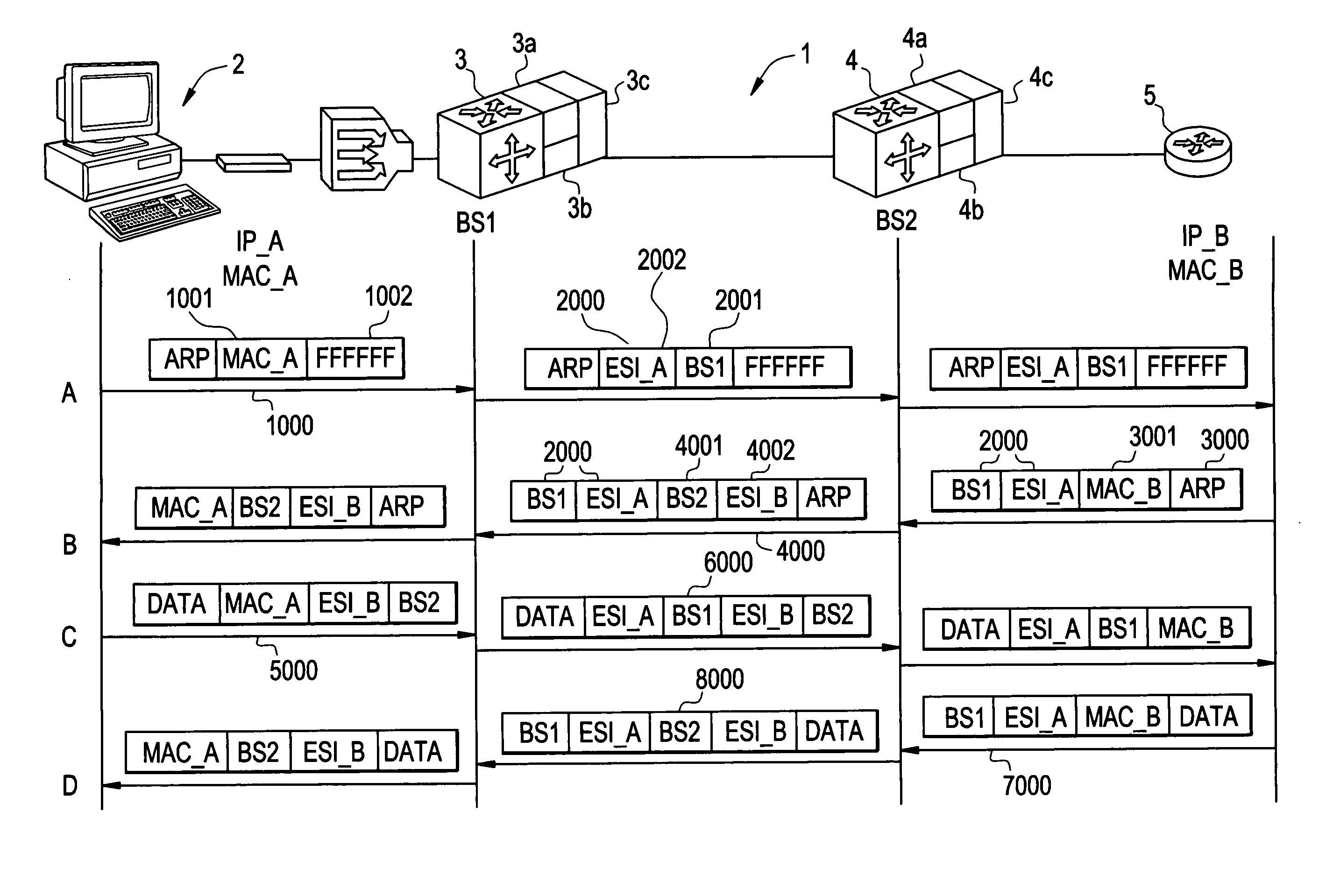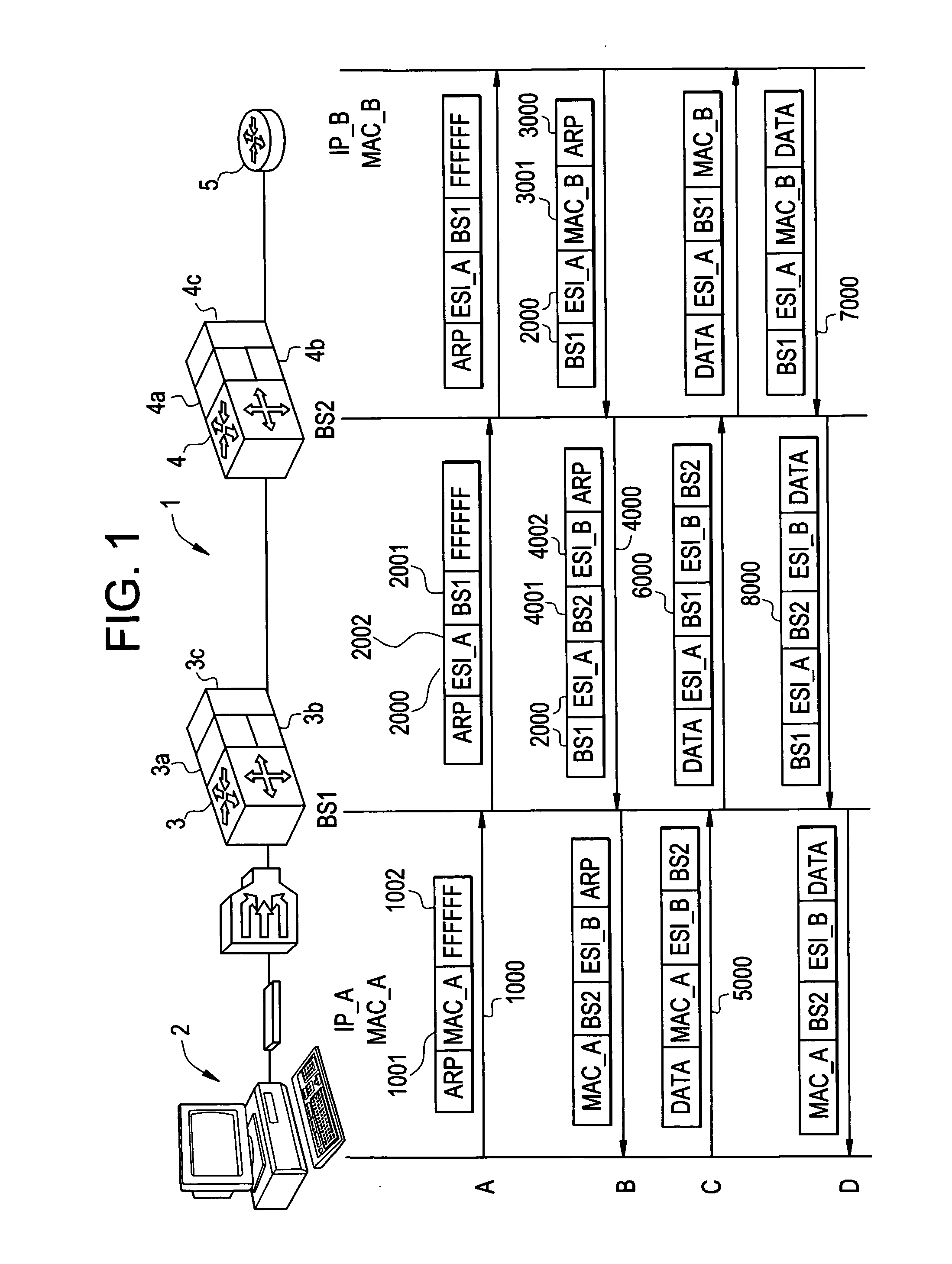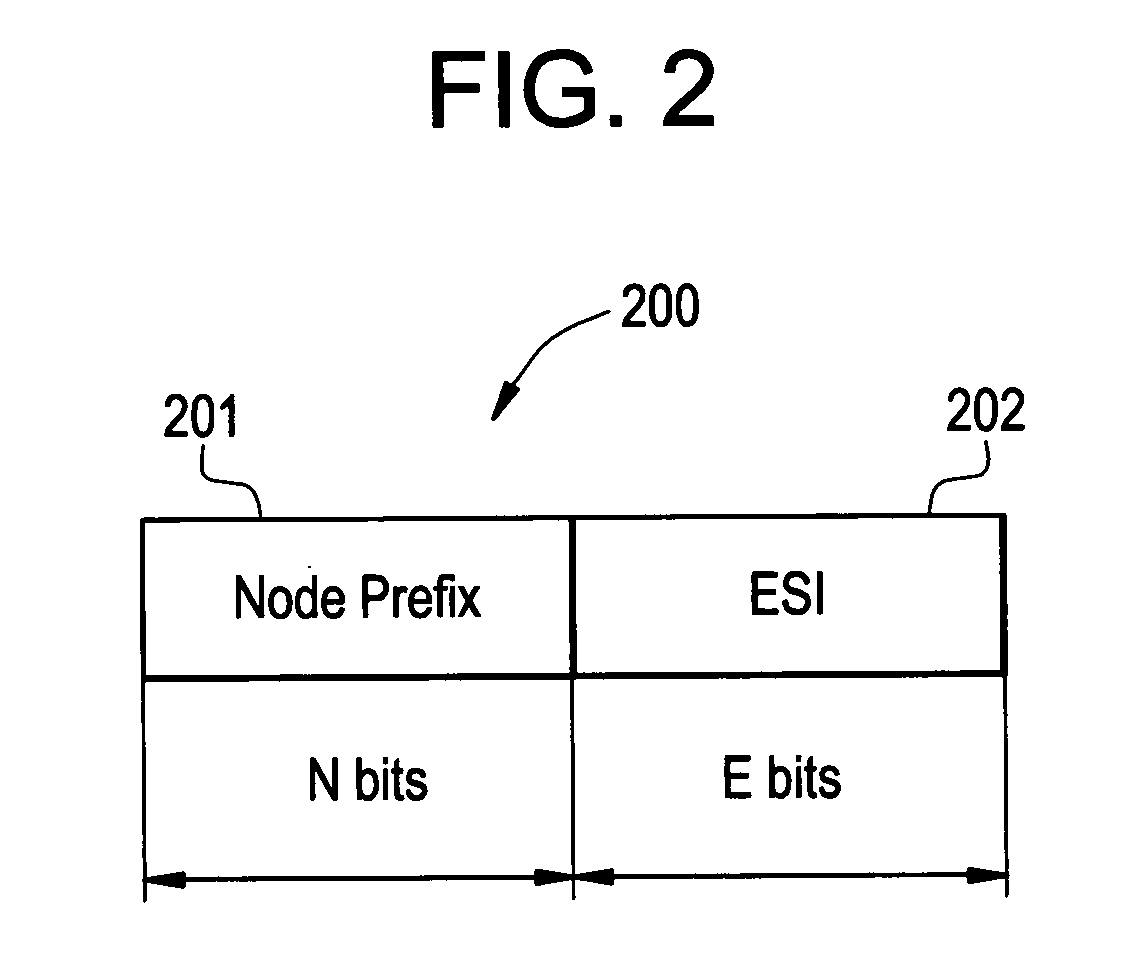Methods and devices for generating and forwarding translated MAC addresses
a technology of mac addresses and translation methods, applied in the field of data communication networks, can solve the problems of affecting the cost of operating, maintaining and upgrading a network, the limit on the speed of a network growth, and the problem of problems still persisting, so as to achieve the effect of low cost and a large number of nodes in the network
- Summary
- Abstract
- Description
- Claims
- Application Information
AI Technical Summary
Benefits of technology
Problems solved by technology
Method used
Image
Examples
Embodiment Construction
[0009]Referring to FIG. 1, there is depicted a network 1 which includes a source node 2 (e.g. personal computer, client server, etc.), first edge or intermediate node 3 (e.g., backbone switch at a CO or the like), second edge or intermediate node 4 and destination node 5 (e.g., router). When a packet containing a conventional MAC address 1000 is sent from the source node 2 to node 3, a network processor 3a or the like within node 3 controls the conversion of the address into an address 2000 that has a new format in accordance with the present invention. This new format redefines the conventional 48-bit, MAC label. Though the MAC label is redefined the packet size remains the same. This converted MAC address is known as a translated or virtual MAC address (hereafter collectively referred to as a “translated” MAC address).
[0010]FIG. 2 depicts one example of such a translated MAC address 200. As shown, the address 200 includes a node prefix (NODE PREFIX) portion 201 and an end station ...
PUM
 Login to View More
Login to View More Abstract
Description
Claims
Application Information
 Login to View More
Login to View More - R&D
- Intellectual Property
- Life Sciences
- Materials
- Tech Scout
- Unparalleled Data Quality
- Higher Quality Content
- 60% Fewer Hallucinations
Browse by: Latest US Patents, China's latest patents, Technical Efficacy Thesaurus, Application Domain, Technology Topic, Popular Technical Reports.
© 2025 PatSnap. All rights reserved.Legal|Privacy policy|Modern Slavery Act Transparency Statement|Sitemap|About US| Contact US: help@patsnap.com



